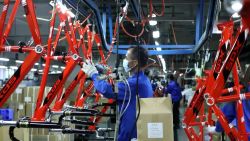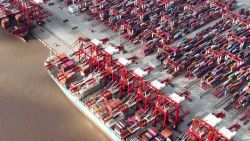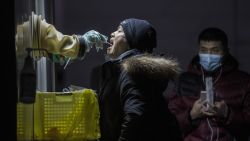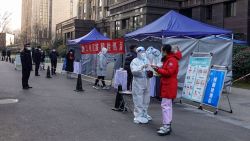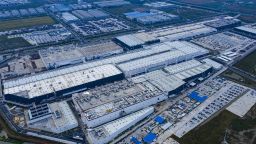China has reported disappointing economic data for the month of April, underscoring the extensive damage Covid lockdowns have wreaked on the country.
The world’s second largest economy reported shocking drops in retail sales and factory production, widely missing market expectations.
Retail salesplunged11.1% in April from a year ago, according to China’s National Bureau of Statistics on Monday. That was well below the 6.1% drop forecast in a Reuters survey of economists, and also much lower than the 3.5% decrease seen in March.
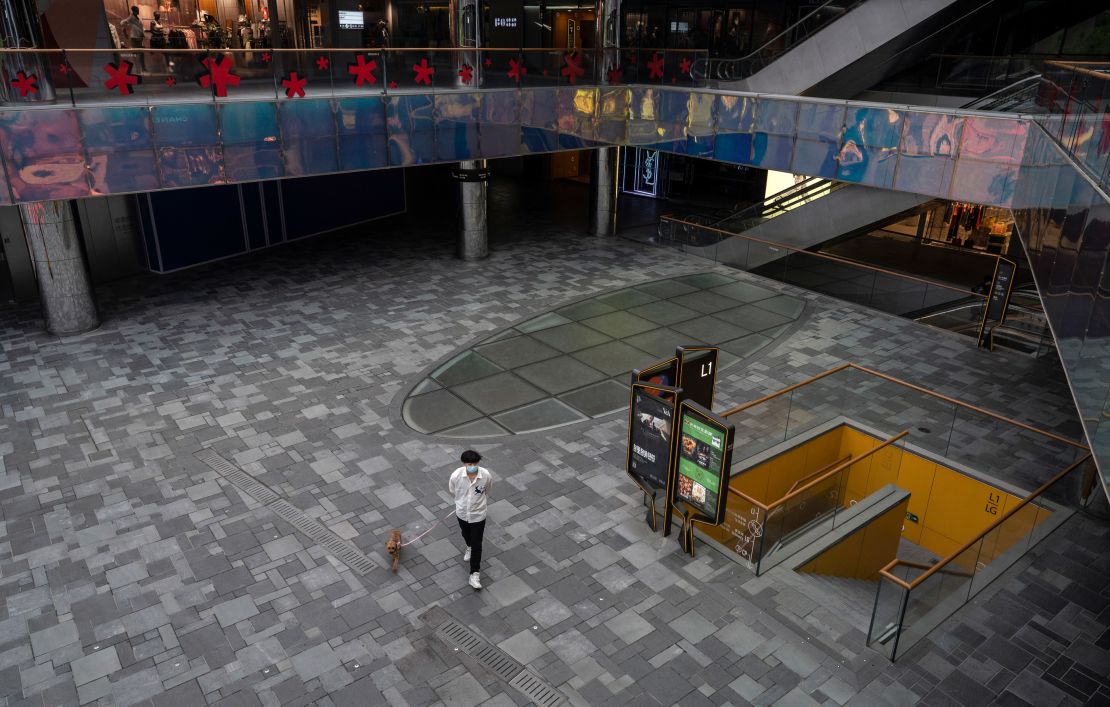
Industrial production fell 2.9% last month from a year earlier, reversing a 5% gain in March.
This marks the worst contraction in industrial production since February 2020, when China’s economy came to a near standstill during the initial coronavirus outbreak.
Unemployment also surged to the second highest level on record.
The urban jobless rate hit 6.1% in April, up from 5.8% in March — which was already at a 21-month high.The only time China’s jobless rate was higher was in February 2020.
Young people have been finding it especially hard to find jobs, the data showed, with the unemployment rate for those between 16 to 24 years of age rising to 18.2% — the highest ever.
Rising unemployment is a warning sign for the ruling Communist Party given the risk of social and political instability.
“After all, zero-Covid at the cost of surging unemployment is a hard sell politically,” said Larry Hu, chief China economist for Macquarie Capital.
The government expects the economy to rebound this month.
“Economic performance” in May will improve, said NBS spokesperson Fu Linghui on Monday.
“As the outbreaks are under control and people’s life return to normal, pent-up consumption will be gradually released,” he said.
Increased investment in infrastructure projects will also support the recovery, he added.
Hefty blow
China’s economy was off to asolidstart in 2022, recording 4.8% growth for the first quarter.
But Beijing’s efforts to curb its worst Covid outbreak in two years have dealt a hefty blow to activity since March, and economists now expect GDP to shrink this quarter.
So far, at least 31 cities in the country remain under full or partial lockdown, according to CNN’s latest calculations. Shanghai, the country’s financial center and a manufacturing hub, has been under lockdown formore than six weeks.During this period, many companies have been forced to suspend operations, including automakers Tesla (TSLA) and Volkswagen (VLKAF) and iPhone assembler Pegatron.
“We think Q2 GDP growth will likely turn negative,” said Zhiwei Zhang, president and chief economist for Pinpoint Asset Management, on Monday.
“The government faces mounting pressure to launch new stimulus to stabilize the economy,”Zhang said.
The leadership in China is aware of the economic pains and has taken some steps recently to bring relief.
The People’s Bank of China announced Sunday that it would cut the mortgage rate for first-time homebuyers, in a move to lift the ailing property market.
Separately, the Shanghai government said the city will gradually open shops, restaurants, and salons from Monday, which will be a relief for its 25 million residents.
The government has also recently pledged to prop up the economy through more infrastructure spending and targeted monetary easing to support small businesses.
Monday’s data showed investments in manufacturing increased 12.2% from a year ago. Infrastructure investment, meanwhile, rose 6.5%.
But “the risks to the outlook are tilted to the downside, as the effectiveness of policy stimulus will largely depend on the scale of future Covid outbreaks and lockdowns,” said Tommy Wu, lead China economist for Oxford Economics, on Monday.
“We forecast GDP to grow 4% this year, with a quarterly contraction in the second quarter before returning to growth in the second half.”
— CNN’s Beijing bureau contributed to this report.




